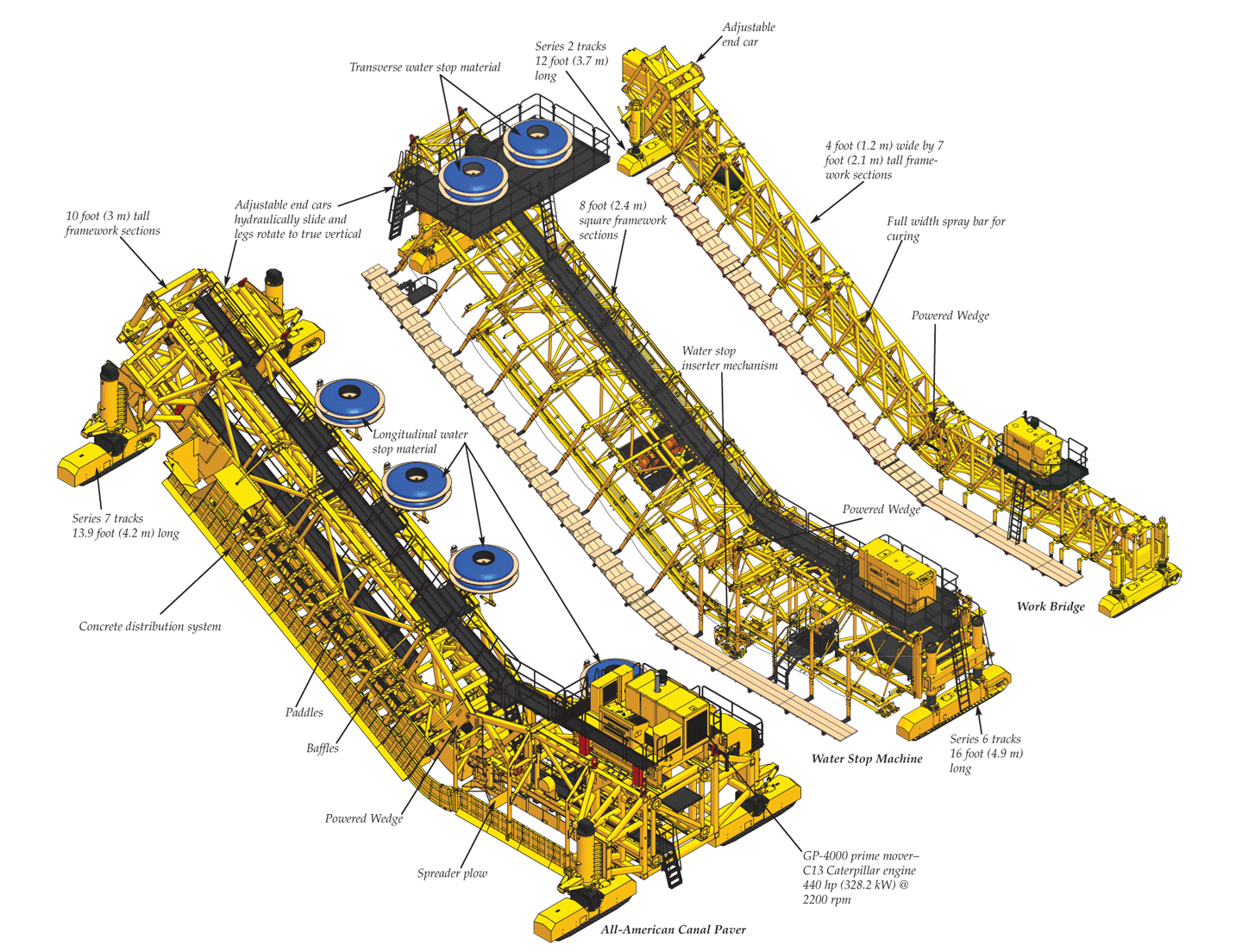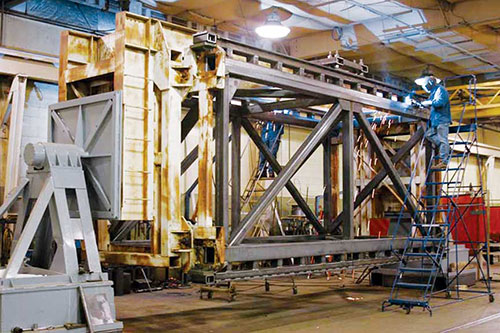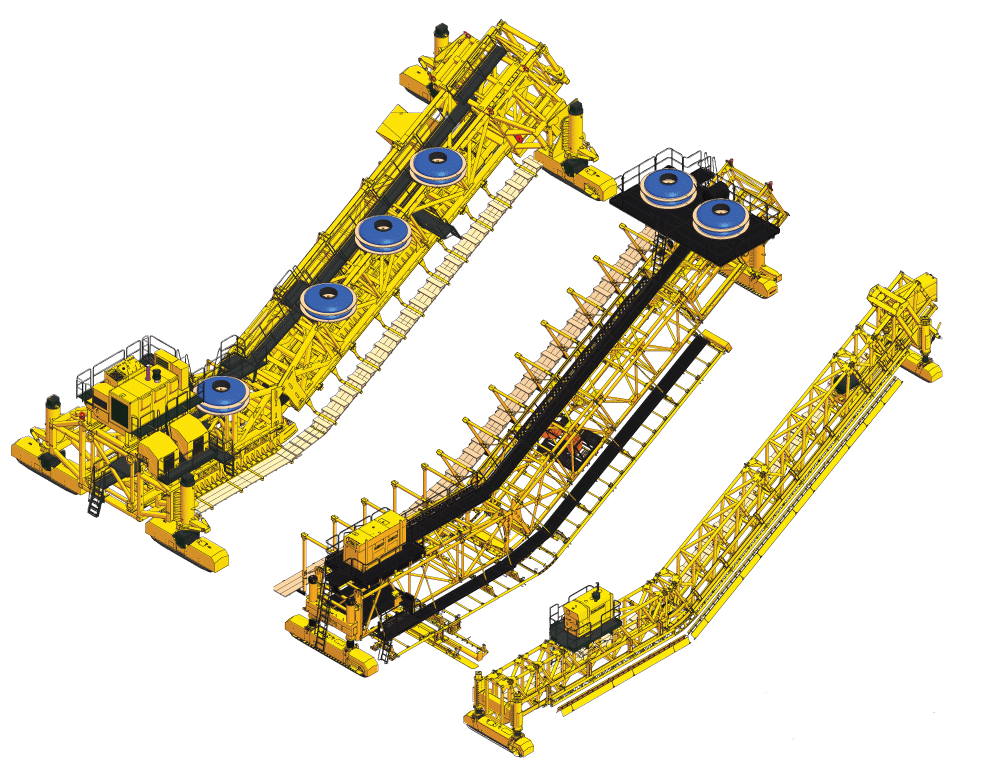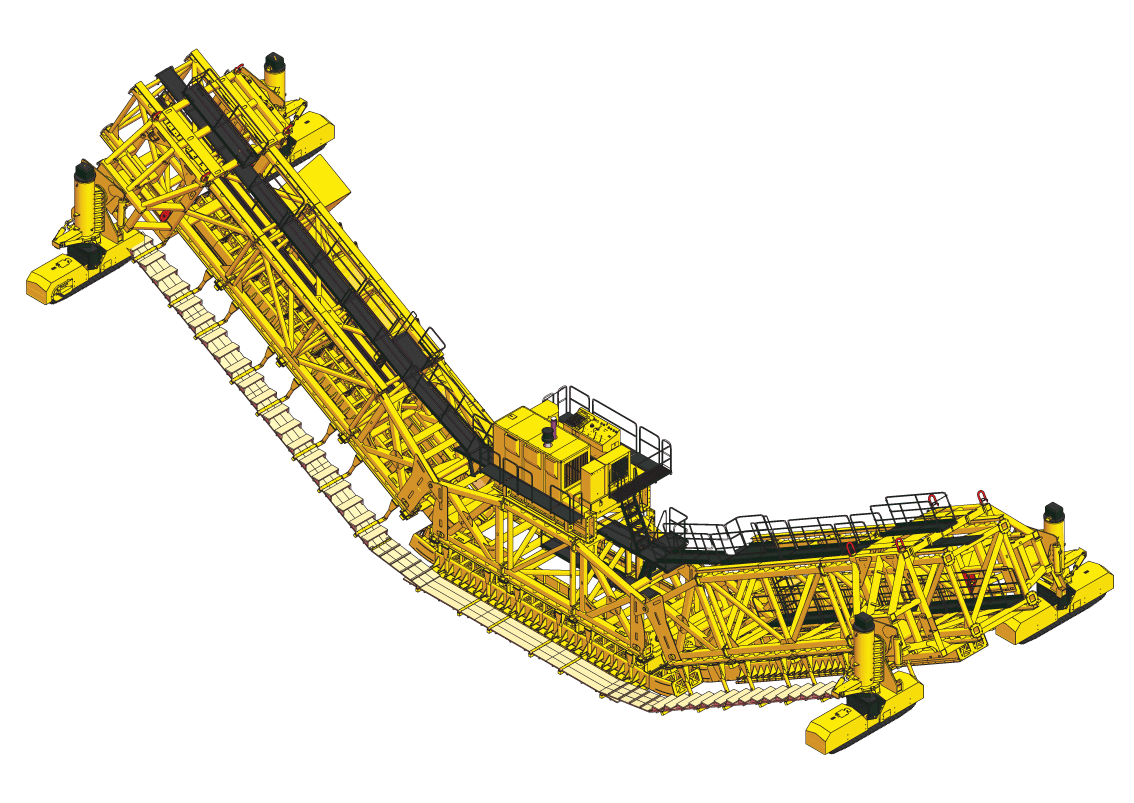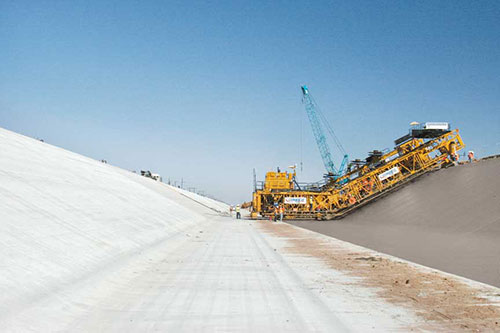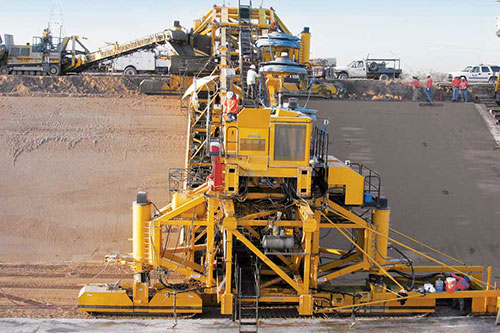GOMACO World Index --- GOMACO World 36.2 - July 2008
Page 2
The All-American Canal Paver–
Meetings between Coffman Specialties and GOMACO’s sales and engineering staff started even before the bid was submitted for the project. Coffman Specialties and their team of experts and GOMACO met several times during the design and building process. Ideas were exchanged, theories proposed, and through it all, there was a partnership between the two companies to develop the best equipment possible for the project and future projects. A crucial design element was creating equipment that could pave Reaches Two and Three of the All-American Canal, but also be utilized on other future canal work, and have the ability to pave flat on airport or other projects.
“Basically, Coffmans did not want a canal machine,” Homan said. “They wanted the ability to slipform future projects with different slope angles, different canal widths and the ability to pave a full prism, which is both sides of the canals with its invert in a single pass. They were also looking at some airport work and needed to be able to pour flatwork. And they didn’t want to spend days changing the machine in and out to accommodate the required application. They wanted a machine that could do all of that.”
The answer was a paver that incorporated new technology and engineering to accommodate all of the requests...
A GOMACO GP-4000 prime mover, set on top of a ten foot (3 m) tall framework, provides the power plant and control system for the paver. The mold sections are a 5000 series paving mold which were slightly modified. The machine is mounted on four tracks that are 13 feet, nine inches (4.2 m) long, 30 inches (762 mm) wide and 40 inches (1016 mm) high.
Placing concrete down the 1.75:1 or 2:1 slope and across the 25 foot (7.6 m) wide canal floor was a serious challenge. One of the unique aspects of the paver is its concrete distribution system mounted to the front. Concrete trucks dump into a standard GOMACO RTP-500 rubber-tracked placer, which then places the concrete into the distribution system on the paver.
The paver’s distribution system is basically a paddle system with baffles that run along the slope of the canal. The paddles move the concrete down the slope and the baffles collect the concrete to keep it from sliding down to the bottom of the slope. The paddle system also has the ability to reverse direction. If too much concrete slides toward the bottom of the canal, the paddles can be reversed to carry it back up the slope.
Thirty-five standard vibrators are mounted transversely, rather than perpendicular, to the mold at 24 inch (610 mm) intervals. Because the slab is only four inches (102 mm) thick, it was necessary to operate the vibrators at less than full speed to prevent over-vibrating the concrete. It also allowed better vibration coverage across the entire slab.
A spreader-plow, on the bottom 25 foot (7.6 m) wide section of the canal floor, moves the concrete across that width.
The design of the canal itself presented an interesting challenge for GOMACO engineers while designing the paver. The slope of the canal is not constant and the length of the slope is variable. The paver has to be able to accommodate the changes as quickly and easily as possible. These were crucial elements for not only this project, but future projects as well. This paver had to be adaptable to different specifications. GOMACO spent a lot of time and effort engineering end cars and a “Powered Wedge” to meet the requirements.
Two different types of end cars are mounted to the framework of the paver - a fixed end car and an adjustable end car. The adjustable end car can be slid in or out hydraulically while the paver is stopped to accommodate the different slopes. It allows the length changes to be made without having to add or remove any sections of framework.
The other crucial feature is the Powered Wedge. When the length of the slope changes, it also changes the angle of slope on the canal and the pivot point on the paver. The Powered Wedge makes the machine adjustable to the canal’s different angles and helps the paver match the grade the canal trimmer is preparing.
The specifications on the canal require a longitudinal and transverse fracture joint every 15 feet (4.6 m). Four massive spools of blue cross-shaped, polyvinyl chloride rubber strips are mounted to the paver. The material is inserted by a specially designed inserting mechanism into the four inch (102 mm) thick concrete on-the-go, during the slipforming process. The longitudinal water stops then creates the canal’s fracture joints.
“It creates a 15 foot (4.6 m) section for the concrete to fracture to allow for soil movement and other conditions,” Homan said. “Once the fracture takes place, the water stop is bound into the concrete slab and allows it to move and flex. It’s also creating a seal that keeps water from leaking through the canal into the soil below.”
Coffman’s crew makes the second paving pass on Reach Three of the canal project. Just a few days of concrete paving was left for the crew when this photo was taken.
The All-American Canal In GOMACO World Vol. 36, No. 2
Page 1 - Page 2 - Page 3 - Page 4 - Page 5 - Page 6 - Page 7 - Page 8 - Page 9 - Page 10
